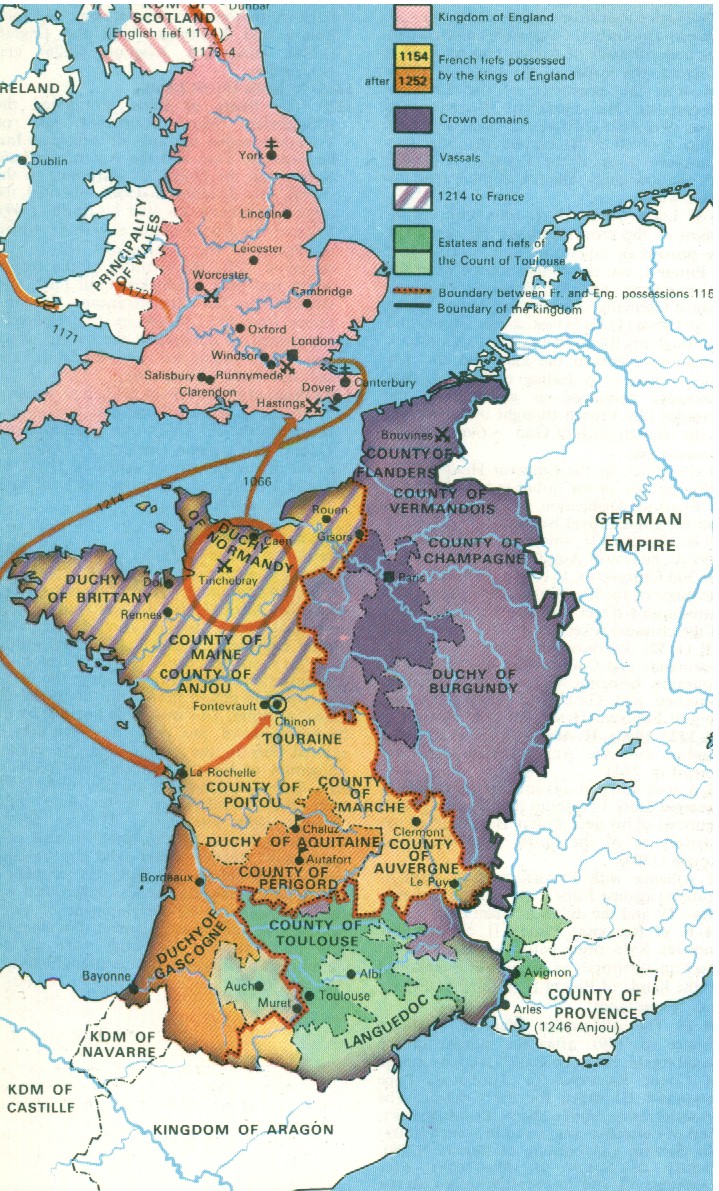
Political Background of Novit
Treaty of Le Goulet 22 May 1200: In return for 20,000 marks, Philip II Augustus recognizes John of England's holdings in France.
John's Marriage to Isabella of Gloucester annulled. John marries Isabella of Angouleme who had been betrothed to Hugh Le Brun, count of Lusignan.
Hugh tried to obtain justice from John, then appealed to Philip II.
Philip summoned John to appear at his court in 1202 to answer the charges. When John ignored the summons, Philip declared John contumacious and ordered the confiscation of all his French fiefs.
Over the next few years Philip conquered all of John's continental possessions, except for Aquitaine (Gascony).

|
Political Background of Magna Carta Hubert Walter, archbishop of Canterbury died in 1205. The monks of Christ Church in Canterbury secretly elected Reginald. John rejected their choice and forced the monks to elect John de Grey, bishop of Norwich. The case was taken to Rome. Innocent III rejected both candidates bestowed the archbishopric on Stephen Langton in 1207. John broke with the church, was supported by his barons. Innocent III placed England under interdict in March 1208. In 1209 Innocent excommunicated John. 1213: Innocent supported an invasion of England by Philip II. Settlement: John accepted Stephen Langton, restored the losses of the English church, declared that England and Ireland were papal fiefs, and promised that he and his successors would pay a tribute to the pope each year in perpetuity. He met the Barons at Runnymede and signed Magna Carta. |